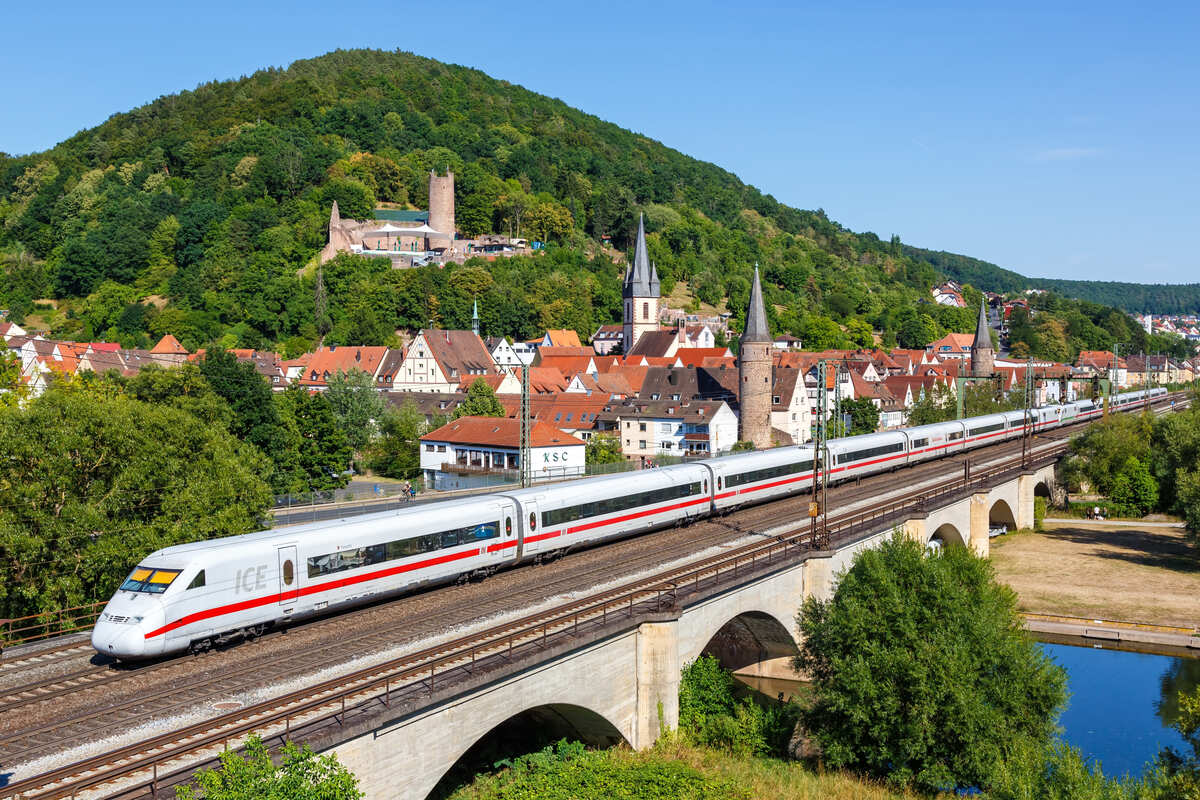Share the article
Last updated
Perhaps the most unlikely travel trend to revive in 2023: Train traffic is back at full speedwith countless countries around the world creating previously unfunded routes, or even launching brand new routes – scenic drives across the Riviera Maya, anyone?

However, much of the action has focused on Europe: with a well-connected train network connecting several countries, and with its aim to drastically reduce CO2 emissions in the medium term, the Old Continent has turned to the railway to stimulate tourism. .
Now both Germany and Hungary have two of the most beautiful destinations in Europeoffer unlimited unlimited rail passes for around $55, and if we were you, we wouldn’t want to miss this, especially when there’s no way to tell how long the generous offers will last.

You can always use some extra encouragement, so it might be worth mentioning that there is a third country you can travel in for freeand it’s just as fascinating as the other two.
Luckily for you, this mysterious, vastly underrated destination is just a stone’s throw from the German border.
Let’s first look at the German and Hungarian offers.
How does the German pass work?

Germany launched their €49 ticket last March, which works out to about $55.
The measure, which was believed to be temporary at the time, proved so successful that the government has continued to apply it, and it appears likely to become permanent, with Transport Minister Volker Wissing calling it the “largest public transport reform in the German history’.
The Deutschlandticketas it is formally known, or simply ‘Germany Ticket’, allows holders to travel as often as they wanton all regional public transport routes, throughout almost the entire country for a fixed monthly amount.

That said, its validity mainly applies to local and medium-distance travel, such as metropolitan regions or intra-state travel, and functions as a digital subscription that can be canceled before the next month’s billing.
Essentially, subscribers can board any short- and medium-distance bus and train they wish during their subscription period, depending on the region of Germany they are currently traveling to.
For example, those using the pass in metropolitan Berlin can now travel from the German capital to the neighboring state of Brandenburg free, without paying extra costsas Brandenburg would be considered short to medium distance travel.

On the other hand, pass holders cannot board the train from Berlin to Frankfurt or from Berlin to Cologne without booking an independent train ticket, as this would mean boarding a long-distance train.
This applies to all long-distance routes, including all trains of DB Fernverkehr AG, including RE, and FlixTrain (IC, EC and ICE).
The validity of a ticket varies by region and it all depends on where the pass was purchased and especially which region it is linked to and where it is activated.

Still, it’s a great way to save money on travel in Germany, as the total cost of train travel between multiple cities within one state, such as Bavaria, home to Munich, Nuremberg, Regensburg, Würzburg, Bamberg and other popular historical hotspots normally costs much more then $55 without pass.
In addition, pass holders can board certain eligible trains to/from stations in neighboring countries when operated by a German operator and when the pass is linked to the state or region of entry.
These include Tønder in Denmark, Wissembourg in France, Basel in Switzerland and Świnoujście in Poland.

Tickets can be purchased directly from the German National Service Deutsche Banh or from local transport providers in different cities.
What about Hungary?
As for Hungary, there are two travel passes available, one for the entire country and one for the provinces.
Traveling through the Eastern European gem, tourists can experience a ‘National travel card‘, giving them access not only to every train, but also to every bus line in the country, as long as the following companies operate them:

- MÁV-START
- MÁV-HÉV
- GYSEV
- Volánbusz (buses only)
For the duration of the pass, which lasts 30 days, you are free to hop around the city at your leisurefrom the stately Austro-Hungarian thermal bath hotspot Budapest to the serene Lake Balaton, known as the ‘Hungarian Sea’, to the ancient cultural hotspot of Pécs, near the Croatian border.

Like the Germany ticket, Hungary’s national pass costs just 18,900 Hungarian forints, or about $55, and foreign visitors can purchase it at more than 1,100 ticket offices throughout Hungary.
All you have to do is just walk into a train station, the nearest MÁV-START, GYSEV or Volánbusz office or simply find a vending machine and select the option that suits you best.
It is worth noting this card cannot be used at municipal servicesmeaning you can’t use it to take the tram or metro in the wider Budapest urban zone, or to take any regional public transport in a specific Hungarian city.

In a way, it is the opposite of the German pass.
Fortunately, Hungary then introduced a ‘County Travel Card’, which allows holders unlimited bus and train travel in any of the 19 provinces. It costs around $27, and it is the perfect option for tourists who want to stay in one location for a while.
This option is sure to make digital nomads happy, as Budapest is quickly becoming one of the world’s top nomad destinations, and they often stay in the city for between one and three months.

If you are a student, you should know that you qualify for 90 percent discount If you purchase these tickets, make sure you bring a valid international student card showing your status.
What about the third mysterious country?
After all, there is still one country missing.
$55 rail passes for unlimited travel sound great, but what about? unlimited free to travell for both residents and tourists?

Luxembourg is currently the only European country to grant this privilege to non-tax-paying visitors, as they can hop on any train or bus throughout the principality and explore the area without prior booking. one of the most beautiful, fairytale destinations extensive without excessive ticket costs.
You read that right, no ifs or buts or caveats:
This is all-encompassing free public transport, regardless of the routetrain line or distance, applicable to all nationalities, provided it is a national route that does not cross the Luxembourg border with France, Germany or Belgium.

Some of the main attractions in ‘Lux’, as Europeans commonly call it, include Luxembourg City, the compact national capital, famous for its characteristic medieval fortress and cobbled historic centre, Vianden, home to one of the largest and most impressive medieval castles. and the charming center town of Ettelbruck.
Because Luxembourg is a small country, you can cover a large part of the territory three to five days, making it a perfect stopover destination on your cross-country European trip.
Read more:
Top 5 Travel Insurance Plans for 2023 from $10 per week
How to easily earn points for free travel

SUBSCRIBE TO OUR LATEST POSTS
Enter your email address to subscribe to the latest Travel Off Path breaking travel news, delivered straight to your inbox.
This article originally appeared on TravelOffPath.com





